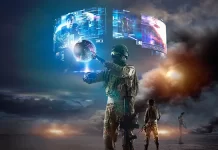

Learn from Recent Lessons and Modern Conflicts
The Agnipath Scheme approved by the government and now under implementation has its serious flaws, which must be addressed.
Lessons from Ukraine
The ongoing war in Ukraine has some very pertinent lessons, which India must ingest and implement before it is too late. Simply put, 70 per cent of our high-tech equipment is of Russian origin, which has been put to the unforgiving test of combat. There is a dire need to retro-fit and re-design based on lessons learnt. The key lesson, however, is the unprecedented levels of lethality on the modern battlefield and the sheer scale of casualties that are staggering and unprecedented. We are almost back to the carnage and slaughter levels of World War I era. The Clausewitzian dictum of war, not just as an unrelenting contest of national wills but also of stamina and endurance, is back. This is the most inopportune time to downsize or reduce numbers (as we are doing in India). The world over, defence budgets are rising very fast and armed forces are adding not just new weapons and equipment but also increasing the size of their armed forces. This is the new era of not just high-tech but high-tech and Mass. Nations that want to win in such unrelenting wars will need to generate the mass that is required to prevail in such intense and long duration grinds of attrition. Wars will increasingly be a test of national will and stamina to stay the course. Both Russia and Ukraine are feverishly raising and training new formations even as they are locked in brutal combat. Downsizing a standing field force in such a dire scenario could well be an invitation to very severe problems in wartime.
High Tech and Mass. Today, the world is witnessing the sheer costs nations are willing to endure to attain their objectives and simply prevail in such hard fought slogs of attrition. Russia is not at all short of high-tech equipment. (We are buying most of ours from them). What Russia is painfully short of is manpower and its ill-effects are for the world to see as it recycles the same tiered and battered formations again and again and is constantly having to move its units and formations around to plug gaps. Russia attacked Ukraine with a force of just 1,50,000. Ukraine, in turn, mobilized fully and has fielded a force of 2,50,000. This has enabled it to regain the initiative because it can constantly open up new fronts. Manpower is not a drain on resources needed to buy high-tech equipment. It is a key resource without which no war can be won. India has no dearth of manpower. In fact, we have the largest and youngest population in the world. Yet we have been exhibiting an obsessive concern to down size and reduce our manpower, as if instead of being an asset, it was our biggest liability.
Historical Precedents
There are some underlying reasons and a history to this down-sizing urge – especially in the Indian Army. It goes back to 1990, when the Indian economy had come close to the point of collapse. The government of the day told the armed forces they simply had no money to give for our military modernsiation and we would have to wait till our GDP went up. In a desperate bid to raise money for the capital budget, then Army chief Gen VP Malik had come up with the idea of slashing the Revenue Budget by down-sizing. Desperate times call for desperate solutions, perhaps. Today, our economy is the fifth largest in the world. We had suppressed manpower by 50,000 men and were trying to cut another 50,000. That is the time the Kargil War intervened. We were forced to restore disbanded units and raise some 36 new Rashtriya Rifles battalions and new Sector and Force HQs (not to mention a new Corps HQ for Leh). In cost cutting and accounting exercises, we simply cannot afford to lose sight of our threat environment and need for retaining operational effectiveness. Accountant Generals cannot replace Generals in times of war.
The primary rationale for the launch the Agnipath scheme was the panic over the ballooning pension bill of the armed forces. This panic was not entirely unjustified. The combined salary bill of the armed forces today is Rs 1.08 lakh crores. The pension bill now surpasses it at a whopping Rs 1.12 lakh crores. Quite clearly, this level of outlay for pensions was unsustainable and something would have to be done about it. There was a proposal to apply the National Pension Scheme (NPS) to the armed forces, too, but this was deemed politically unacceptable. There was a far more viable Inverse Induction Model – wherein soldiers retiring from armed forces would automatically move on to the Central Armed Police Forces (CAPFs) and paramilitary forces (PMFs) or do a short stint and then migrate to CAPFs. This was the most logical option and one which the armed forces have been asking for decades. Unfortunately, the IPS lobby has been most unwilling to accept this for pure reasons of turf, empire building and institutional egos. The ostensible reason given is that they need young troopers. Considering that the age of retirement in the CAPFs is 58, this sounds a bit rich. Data indicates that the CAPFs so far took only 0.9% of retired soldiers in Groupp C posts and just 0.47% in Gp D posts. Thus, the most logical and desirable model which would have provided tactical skills and combat experience of the Army soldiers to the CAPFs, was never allowed to take off.
The Agnipath Scheme now adopted is a mish-mash of many models. Unfortunately, in trying to please all it has ended up pleasing almost nobody. The ostensible aims are rather noble. It is to infuse discipline into the Indian population at large. So far, each year 60,000 armed forces personnel used to retire and go back to the villages. If they and the National Cadet Corps (NCC) could not instill general discipline, I fail to see how 43,000 Agniveers every year (present intake) will make a greater difference? A great deal of concern is expressed about the second career of the Agniveers. Promises galore are being made but these would have to be fortified by an act of Parliament.
My basic question however, is about the first chosen career. How viable or attractive is it in comparative terms? A youth in a village – would he opt for the Police, CRPF or BSF, etc, where once in he can serve for 58 years or a most uncertain four year Tour of Duty in the Army? Four years is simply too short a period to integrate the Agniveers into the ethos and regimentation of an Army unit – especially where crew-served weapons are involved. There is also the danger of trained manpower being exploited by terrorists, gangsters or anti- national elements on release. We had faced this threat in the Punjab in the 1980s. Shabeg Singh was a former major general of the Army. If he and other boys could go astray then how can we be so sanguine that the Maoist or other groups will not exploit the Agniveers? Also, we need to consider the burden on the commanding officers at the unit level. If the CO is operationally committed on the Line of Control/ counter-terrorism operations/ Line of Actual Control, how does he train these Agniveers? By the time he does, they would be on their way out. Will a short-term inductee not be risk-averse? The Ukarine war has clearly highlighted the conscripts and short term inductees as the weakest link in the chain.
Cutting Manpower
The Agnipath scheme has been accompanied by a manpower cut of almost 1.5 lakhs in the Army. For two years no recruitment was done on the plea of Covid. Since 60,000 soldiers retire each year, it implies that the Army is short by minimum 1.5–2 lakhs already. Given the alarming level of rising threats from China, Pakistan, Afghanistan, Turkey and terrorists elsewhere, this almost sounds like a civilisational death wish. The Agnipath scheme is long term in impact. Financial gains will only be realized 15 year down the line when they would ostensibly have retired. So, no new weapons will come into the armed forces now as a result of this scheme. We still have to find resources to buy or produce the weapons in the here and now. Meanwhile, the existing manpower assets have also been slashed.
Ukraine Pointers
The Russia-Ukraine War has clearly highlighted the tremendous new lethality of the modern battlefield. The casualties to weapons, equipment and personnel have been of an unprecedented level, that is reminiscent of the slaughters of the First World War. Force preservation, reconstitution of battered units and casualty replacement are the worrying new dilemmas. Wars will no longer be short duration and high-intensity. The Ukraine War is already into its seventh month and the end is nowhere in sight. It is becoming a serious test of national stamina and endurance. Russia has no shortage of equipment. It is drastically short of manpower and its problems are acutely visible to the whole world. We have no dearth of manpower but are busy slashing and down-sizing when we need to be desperately creating new jobs for the rising youth-bulge in our population. The pattern of wars is inexorably shifting back to the levels of lethality of the two World Wars. The Indian Army was a regular standing army precisely structured to fight such intense wars. Now that we are returning to the era of such wars, we are busy destabilizing ourselves by creating unprecedented amounts of organizational turbulence. Why do we want to down size, get in short-term inductees as 50 per cent of the force, reduce 17 single service commands to just five Tri-Service ones, as also change our regimental model – and why do we want it done day before yesterday? We have a tried and tested armed forces, which have served us very well so far. An old military proverb says “don’t change horses mid-stream” before the battle.
What then is the way out? Two constructive suggestions – increase the colour service from four to seven years and retention from 25% to 50%. We will, thereby, make the army a viable career and return to the tried and tested model, which kept the Army young and won you the 1971 War!


















